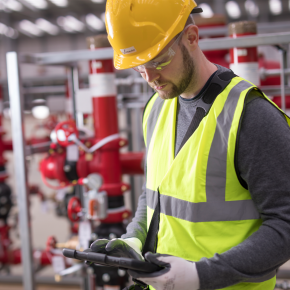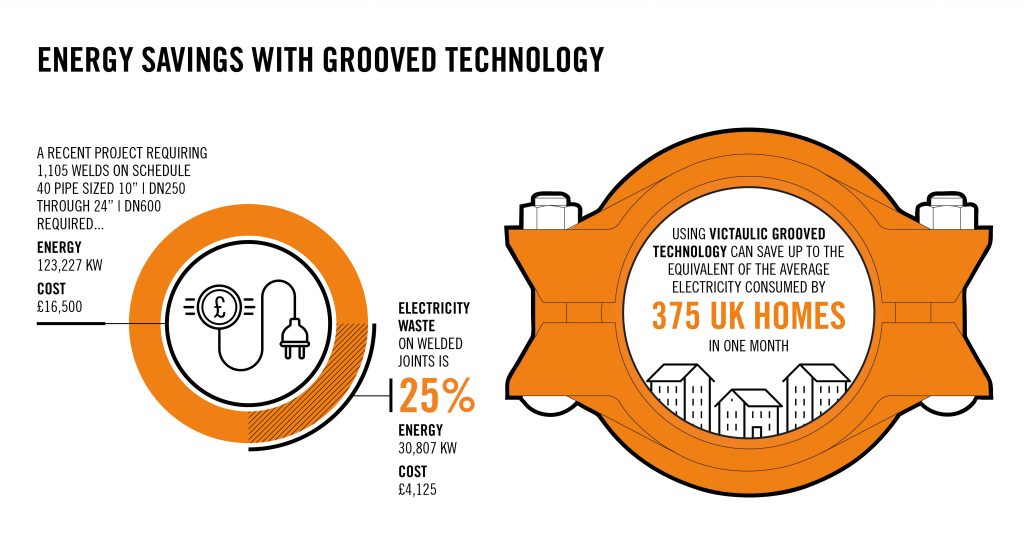
GUEST ARTICLE: More Sustainable Construction – How to Use Less Resources in Pipe Installation
The need to embrace modern and cleaner methods of construction has been highlighted at both a global and local level. The United Nations’ General Assembly seeks to ensure sustainable consumption and production patterns as one of its Sustainable Development Goals (SDGs).
In the UK, former British Prime Minister Theresa May recently called for the construction industry to adopt more sustainable practices, while the government’s strategy for the construction sector seeks to achieve a sustainable and smart industry, which efficiently uses resources and leads the world in low-carbon and green construction, by the year 2025.
This may suddenly feel like a lot of pressure for the construction professionals out there, who find themselves needing to update familiar practices and embrace the circular economy, in order to keep resources in use for longer. However, many businesses are increasingly embracing this new approach; a recent report found almost two-thirds of businesses operating in the UK construction industry are now more committed to taking action on sustainability than they were 12 months ago.
Sustainability in construction is a vast and complex subject, as there are multiple ways to use less resources, whether constructing a new building or restoring an old one. When it comes to innovative and simple solutions that are easy to implement, piping systems are often overlooked, yet they present great opportunities for a cleaner construction future.

Taking a step further in digital design
One of the government’s key priorities is to adopt innovative technologies and embrace digital design, and there are already several options to do this, such as Building Information Modelling (BIM), an intelligent 3D model-based process that has been a solution of choice in even the most challenging piping system projects for some time.
The key reason the construction sector, and specifically the PVF (piping, fitting, valve) focus is increasingly choosing to employ the use of pre-site methodology like BIM is due to its ability to save resources; the technology allows contractors and engineers to pre-emptively conceptualise structures. However, further improvements can be achieved by using bespoke tools such as Victaulic Tools for Revit®, Victaulic-provided software add-ins which help further reduce total project labour hours.
For example, the toolbar offers engineers an easy way to increase pipe size or rotate components such as valves and fittings with the click of a button, making designing and editing piping systems incredibly efficient. It also allows to complete pipe runs at specified angles; create fabrication assembly documents; resize pipe; and change fitting and accessory sizes.
This already existing technology is a great leap forward that allows for smarter designs in construction, minimising wastage as potential errors are foreseen and avoided, while materials can be more precisely allocated.
Resource and energy-saving alternative
However, not all solutions and innovative technologies that help construction professionals achieve a cleaner future depend on digital trends. With existing solutions, we often find the seemingly simplest innovations bring the most surprising improvements.
For example, grooved mechanical pipe joining technology eliminates the hazardous fumes caused by welding. This 100-year old method of joining grooved pipes by encasing a gasket, positioning coupling housings and tightening a pair of nuts and bolts has many advantages, both as a strong installation alternative as well as a means to transitioning to low carbon and sustainable construction practices. The benefits over methods like welding or flanging can be seen in two important areas: energy savings and decreased wastage.
Firstly, opting for a grooved mechanical pipe joining solution can have great impact on energy savings when compared to welding. While welding can use up to 4 KW per hour on an eight-inch joint, grooved mechanical joints use just a fraction of that. This is due to their mechanical nature, as a grooved coupling is installed by simply tightening two nuts and bolts by using much more efficient tools such as an impact gun or in some cases, a hand ratchet. The process is much more efficient, for example, compared to arc welding a typical 4”, Schedule 40 carbon steel joint, which consumes 5 KW of electrical energy with an estimated 25% waste during the installation process.
The impact of this energy savings potential is seen more clearly when scaled up to a more practical scenario. A recent project requiring 1,105 welds on Schedule 40 pipe sized 10” through 24” required 123,227 KW of energy be consumed for a total cost of £16,500. Factoring in a 25% KW waste on welded joints equals a loss of £4,125 and 30,807 KW on this job alone. By using grooved mechanical pipe joining, this single project saved the equivalent of the average electricity consumed by 375 UK homes in one month. The wasted electricity would have equalled the amount of average electricity consumed by almost 94 homes in one month.
Investing in the future
Additional savings from grooved mechanical pipe joining systems can be achieved through more efficient use of installed assets. Mechanical systems are easy to modify, allowing for further modifications or expansions if necessary, without engaging in rework, as the pieces are not permanently welded together. Eliminating rework eliminates the associated waste, such as the need to order more than what’s needed or to stockpile product replacements that drive up raw material and transportation costs.
In terms of other waste reductions, using grooved technology also considerably decreases the use of consumables, which accounts for up to 9% of the cost of a welded installation, making grooved couplings not only a more sustainable alternative, but also a more cost-effective measure.
The ambition for a cleaner construction future requires every sector to do their part, and we’re striving to achieve cleaner ways of working. Changing to more sustainable practices does not have to be a burdensome process, since innovative and simple solutions are already available. There are no excuses left to avoid creating a more sustainable and efficient industry.
Article written by Shaun Hughes, Regional Manager Southern UK at Victaulic
Latest news

26th July 2024
Enfield Speciality Doors completes world-class project for Atlas Copco HQ
A rundown office and warehouse building completely transformed into a modern headquarters for Atlas Copco has been fitted with more than 120 internal fire doors from Enfield Speciality Doors.
Posted in Access Control & Door Entry Systems, Articles, Building Industry News, Building Products & Structures, Building Systems, Case Studies, Doors, Interior Design & Construction, Interiors, Posts, Restoration & Refurbishment, Retrofit & Renovation, Security and Fire Protection, Sustainability & Energy Efficiency, Timber Buildings and Timber Products, Wooden products
26th July 2024
Abloy UK launches new white paper
Abloy UK, a leading provider of security and access control solutions, has launched a new white paper.
Posted in Access Control & Door Entry Systems, Architectural Ironmongery, Articles, Building Industry News, Building Products & Structures, Building Services, Doors, Facility Management & Building Services, Health & Safety, Information Technology, Innovations & New Products, Publications, Research & Materials Testing, Security and Fire Protection
26th July 2024
MCRMA Member Profile: David Roy, Director of Roofconsult
David Roy of MCRMA member company Roofconsult has more than 50 years’ experience to draw upon working in the building envelope sector and a unique perspective on how it has changed in that time.
Posted in Articles, BIM, Infrastructure & CAD Software, Building Associations & Institutes, Building Industry News, Building Products & Structures, Building Services, Building Systems, Cladding, Information Technology, Restoration & Refurbishment, Retrofit & Renovation, Roofs, Walls
26th July 2024
Strand: Enhancing Door Functionality and Safety
Craig Fox, Sales Director for Strand Hardware, outlines how door industry professionals might apply door limiting stays…
Posted in Architectural Ironmongery, Articles, Building Industry News, Building Products & Structures, Building Services, Doors, Facility Management & Building Services, Health & Safety, Restoration & Refurbishment, Retrofit & Renovation
 Sign up:
Sign up: